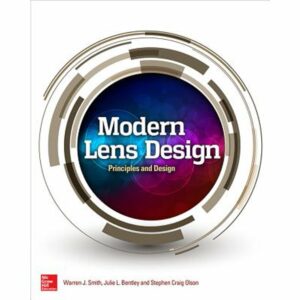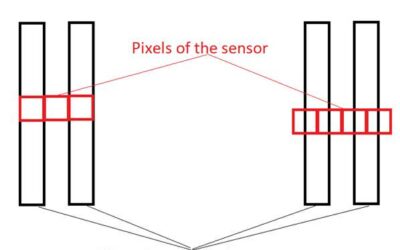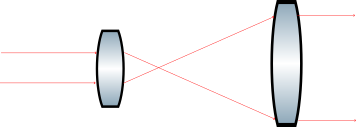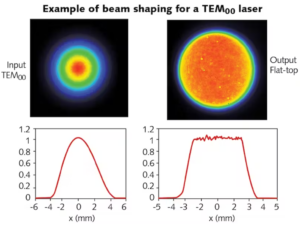Introduction
Lens design is undeniably a complex and challenging field of study, characterized by its intricate blend of physics, mathematics, and engineering principles. Becoming a truly proficient lens designer isn’t merely a matter of acquiring theoretical knowledge; it necessitates years of hands-on practical experience and a keen understanding of how to apply theoretical concepts to real-world scenarios. Fortunately, in today’s interconnected world, aspiring lens designers have access to an array of invaluable resources that can expedite their educational journey. In this post, we will explore a diverse range of learning materials, from textbooks and online tutorials to dynamic discussion forums and specialized software training programs, all aimed at empowering engineers to navigate the multifaceted landscape of lens design, from its fundamental principles to its most advanced techniques. Whether you’re taking your first steps into the world of optics or seeking to refine your expertise, these resources offer a comprehensive roadmap to mastering the art and science of lens design.
Before diving into the specifics, it’s crucial to gain a solid understanding of the fundamentals of lens design. Several resources provide comprehensive overviews of optical principles, aberrations, and the intricacies of lens construction. Websites like Khan Academy and MIT OpenCourseWare offer free introductory courses on optics, providing a solid foundation for aspiring lens designers.
Here is a list of sources that you may want to use to learn lens design
Textbooks
A quick search on google will give hundreds of titles, so it can be a little intimidating to pick the right textbook. These are just four of the books that I have personally used.
Lens design Fundamentals (Rudolf Kingslake),
Rudolf Kingslake’s work on lens design is an important resource that deals into the core principles and techniques essential for understanding the details of optical systems. Within its pages, Kingslake explores a spectrum of critical topics, ranging from the foundational principles of imaging to optical design equations, ray tracing methodologies, optimization techniques, and tolerancing considerations.
One of the book’s standout features is its comprehensive treatment of various lens types, accompanied by detailed descriptions about ther properties and applications. Furthermore, Kingslake supplements theoretical discussions with several practical examples. These examples serve as invaluable aids, facilitating a deeper understanding of key concepts by demonstrating their real-world applications in a tangible and accessible manner.
Beyond its pedagogical value, Kingslake’s book offers readers a captivating journey through the historical evolution of lens design, by tracing the development of optical theory and practice over time. In essence, Rudolf Kingslake’s contribution to the field of lens design transcends mere textbook utility.
Modern Lens Design (Warren J. Smith),
“Modern Lens Design” by Warren J. Smith is a revered and comprehensive textbook that serves as an essential guide for both novice and experienced lens designers. Renowned for its depth of coverage and clarity of presentation, this work offers a thorough exploration of the principles, methodologies, and advanced techniques underpinning modern lens design. Through detailed explanations and practical examples, Smith expertly navigates readers through the intricacies of optical design, covering topics such as aberration theory, optimization algorithms, aspheric surface design, and the latest advancements in lens manufacturing technologies. Widely regarded as a definitive reference in the field, “Modern Lens Design” continues to be an indispensable resource for students, researchers, and professionals seeking to master the art and science of designing optical systems.

Figure 1. Cover of Warren Smith Modern Lens Design (3ed).
Optical system design (Robert Fischer),
Optical System Design” by Robert Fischer presents an updated edition of the 2000 version, offering an accessible introduction to the intricate world of optical design and engineering. Designed to cater to readers from diverse backgrounds, this text employs a user-friendly approach, utilizing straightforward graphics and clear explanations to demystify complex concepts. Whether you’re a program manager, a seasoned optical designer, a mechanical engineer, or an electrical engineer, this book provides invaluable insights and practical knowledge essential for understanding and mastering optical system design. With its engaging style and comprehensive coverage, “Optical System Design” serves as an indispensable resource for anyone looking to delve into the fascinating realm of optics.
Blogs/ on-line forums
A pencil of Rays:
“A Pencil of Rays” is a fantastic blog that offers a treasure trove of valuable information spanning from the basics of doublet lenses to the complexities of zoom and free-form lenses. What sets this blog apart is its comprehensive coverage of various lens types and their practical applications, making it an invaluable resource for enthusiasts and professionals alike. Whether you’re a novice seeking to understand the fundamentals of lens design or an experienced designer looking to explore advanced concepts, “A Pencil of Rays” has something to offer.
One of the blog’s standout features is its user-friendly format, which presents complex ideas in an accessible manner. The author’s adept writing style ensures that even the most intricate topics are explained clearly and concisely, making it easy for readers to grasp the nuances of lens design.
Moreover, “A Pencil of Rays” doesn’t just stop at providing theoretical knowledge; it also offers practical tips and advice on selecting the right lens for specific applications. This hands-on approach adds immense value to the blog, empowering readers to make informed decisions when designing optical systems.
In summary, “A Pencil of Rays” is a must-read for anyone interested in lens design. Its wealth of information, coupled with its easy-to-read format, makes it a valuable resource for enthusiasts, students, and professionals alike. Whether you’re looking to expand your knowledge or seeking practical guidance, this blog has you covered.
ELE Optics Community
The ELE Optics Community is a vibrant hub for individuals passionate about exploring the vast realm of optics. Whether you’re an enthusiastic hobbyist or a seasoned professional, this community offers an inclusive space to engage in discussions and expand your understanding of all facets of optics.
At its core, the ELE Optics Community serves as a platform for members to delve into various aspects of optics, spanning its rich history, theoretical underpinnings, practical applications, and cutting-edge research. By fostering an environment of open dialogue and knowledge sharing, the community empowers individuals to deepen their understanding of optics while forging connections with like-minded peers.
Members of the ELE Optics Community have the opportunity to participate in a wide range of discussions, covering diverse topics such as optical instruments, lasers, fiber optics, imaging systems, optical design, and beyond. Whether you’re seeking advice on a specific project, eager to share insights from your own experiences, or simply curious to learn more about a particular aspect of optics, the community provides a supportive space for exploration and collaboration.
What sets the ELE Optics Community apart is its emphasis on inclusivity and diversity. Regardless of background or expertise level, all members are welcomed and encouraged to contribute to the collective learning experience. Through shared knowledge and mutual respect, the community thrives as a dynamic hub of learning and discovery.
In summary, the ELE Optics Community offers a valuable opportunity for enthusiasts and professionals alike to come together, exchange ideas, and deepen their understanding of optics. With its diverse range of topics and welcoming atmosphere, the community is poised to inspire and empower individuals on their optical journey.
Optics For Hire.
“Optics For Hire” is a multifaceted platform that delves into the intricate world of optics, offering a wealth of valuable insights and knowledge to its audience. While not exclusively focused on lens design, the blog frequently explores the fundamental principles and objectives underlying the art of lens design. Through its articles, readers gain a deep understanding of the core concepts driving lens design, from basic principles to advanced methodologies.
What sets “Optics For Hire” apart is its holistic approach to optics education. In addition to lens design, the blog covers a broad spectrum of topics related to optical technology. From the latest advancements in optical engineering to discussions on lens materials, coatings, and mounts, the blog equips readers with comprehensive knowledge essential for making informed decisions in the field of optics.
One of the blog’s strengths lies in its ability to distill complex ideas into digestible content. Whether you’re a seasoned professional or a novice enthusiast, the articles on “Optics For Hire” are written in a clear and accessible manner, making them suitable for readers of all levels of expertise.
Moreover, “Optics For Hire” stays abreast of the latest developments in optical technology, ensuring that its content remains relevant and up-to-date. By covering emerging trends and innovations, the blog serves as a valuable resource for those seeking to stay ahead of the curve in the rapidly evolving field of optics.
Online Courses
MIT-OCW 2.71 Optics
T
The MIT OpenCourseWare (OCW) offering of 2.71 Optics is a gem in the realm of online education, providing learners with unparalleled access to top-tier instruction in the field of optics. Taught by esteemed faculty at the Massachusetts Institute of Technology (MIT), this course offers a comprehensive exploration of optics, covering fundamental principles, advanced concepts, and practical applications.
One of the standout features of 2.71 Optics is its meticulous organization and presentation. The course content is structured in a logical and coherent manner, guiding learners through the intricacies of optics with clarity and precision. From the basics of light propagation and geometric optics to more complex topics such as wave optics and optical systems, each module is expertly crafted to build upon the preceding material, ensuring a seamless learning experience.
Furthermore, the course materials provided by MIT OCW are of exceptional quality. Learners have access to lecture notes, problem sets, and supplementary resources that augment the learning process. Whether you’re following along with the video lectures or delving into the course materials independently, the wealth of resources available ensures that learners have ample opportunities to engage with the material and reinforce their understanding.
One of the most remarkable aspects of 2.71 Optics is its accessibility. As part of the MIT OCW initiative, the course is offered free of charge to anyone with an internet connection, democratizing access to high-quality education. Whether you’re a student looking to supplement your coursework, a professional seeking to expand your knowledge base, or simply an enthusiast with a passion for optics, this course offers a valuable opportunity to learn from some of the brightest minds in the field.
Coursera First Order Optical System Design
The Coursera course on First Order Optical System Design is a stellar resource for individuals eager to delve into the fascinating world of optics. Developed in collaboration with top-tier universities and industry experts, this course offers a comprehensive introduction to the principles and practices of designing first-order optical systems.
One of the key strengths of this course is its accessibility. Designed for learners of all backgrounds, the course assumes no prior knowledge of optics, making it ideal for beginners seeking to explore the field for the first time. Through a series of engaging video lectures, interactive assignments, and hands-on exercises, participants are guided through the fundamentals of optical design with clarity and precision.
The curriculum of the First Order Optical System Design course is thoughtfully structured to provide a holistic understanding of the subject. Topics covered include ray tracing, optical aberrations, lens design parameters, and system optimization techniques. By grounding theoretical concepts in real-world applications, the course equips learners with the practical skills needed to tackle complex optical design challenges.
One of the highlights of the course is its emphasis on hands-on learning. Participants have the opportunity to apply their newfound knowledge to design and analyze first-order optical systems using industry-standard software tools. Through guided exercises and practical assignments, learners gain valuable experience in navigating optical design software and interpreting simulation results.
Moreover, the Coursera platform provides a supportive learning environment, with access to discussion forums where participants can engage with instructors and peers, ask questions, and exchange ideas. This collaborative approach fosters a sense of community among learners, enhancing the overall learning experience.
Coursera Optical Efficiency and Resolution
The Coursera course on Optical Efficiency and Resolution is a must-have resource for individuals seeking to deepen their understanding of the intricacies of optical systems. Developed by leading experts in the field, this course offers a comprehensive exploration of key concepts related to optical efficiency, resolution, and the propagation of light.
One of the distinguishing features of this course is its focus on Gaussian beams and incoherent sources. By delving into the propagation of intensity for these types of light sources, participants gain valuable insights into how light behaves as it travels through optical systems. Through a series of engaging lectures and practical exercises, learners develop a thorough understanding of the factors influencing optical efficiency and resolution.
Moreover, the course provides participants with the mathematical background necessary to design optical systems with the desired field of view and resolution. Topics covered include techniques for calculating beam profiles, analyzing optical aberrations, and optimizing system performance. By mastering these mathematical principles, participants are equipped with the tools needed to tackle real-world optical design challenges with confidence and precision.
The curriculum of the Optical Efficiency and Resolution course is carefully structured to provide a balanced blend of theory and application. Participants have the opportunity to apply their knowledge to practical scenarios, simulating optical systems and evaluating their performance using industry-standard software tools. Through hands-on exercises and case studies, learners gain valuable experience in designing and optimizing optical systems to meet specific performance criteria.
Furthermore, the Coursera platform offers a dynamic learning environment, with interactive quizzes, peer-reviewed assignments, and discussion forums where participants can engage with instructors and peers. This collaborative approach fosters a sense of community among learners, enabling them to share insights, ask questions, and collaborate on projects.
Coursera Design of High-Performance Optical Systems
The Coursera course on the Design of High-Performance Optical Systems is a comprehensive and advanced exploration of optical engineering, specifically focusing on the intricate design considerations behind creating high-performance optical systems. Led by experts in the field, this course offers participants an in-depth understanding of the principles, methodologies, and mathematical tools essential for designing cutting-edge optical systems.
One of the distinctive features of this course is its holistic approach to optical system design. While many courses may focus solely on lenses, this course goes beyond, delving into a wide range of optical components crucial for achieving high performance. From mirrors to diffractive elements, participants gain insight into the diverse array of components that contribute to the functionality and efficiency of optical systems.
A highlight of the course is its exploration of the human eye as an exemplary high-performance optical system. By analyzing the optical properties and mechanisms of the eye, participants gain valuable insights into the complexities of designing optical systems capable of achieving similar levels of performance. This real-world example serves as a practical illustration of the concepts and principles discussed throughout the course.
Given the advanced nature of the material covered, the course relies heavily on sophisticated mathematical tools for analysis. Participants are introduced to complex mathematical techniques required for analyzing high-performance optical systems, such as wavefront aberration analysis and optimization algorithms. To facilitate this learning, the course utilizes OpticStudio by Zemax, an industry-standard software tool widely used for optical system design and analysis.
Throughout the course, participants engage in hands-on exercises and projects that allow them to apply their knowledge in practical scenarios. By simulating and optimizing optical systems using OpticStudio, participants gain valuable experience in designing high-performance optical systems and analyzing their performance metrics.
Zemax Individual Training
A
The Zemax Individual Training course series offers an unparalleled opportunity to delve into the world of optical design and analysis using OpticStudio sequential mode. Whether you’re a novice exploring the capabilities of Zemax for the first time or a seasoned professional seeking to enhance your skills, this comprehensive training series equips you with the knowledge and tools needed to unlock the full potential of OpticStudio.
Throughout the course series, participants are guided through a step-by-step journey, learning how to create, analyze, optimize, and test a diverse range of optical systems. From simple lens configurations to complex optical assemblies, participants gain hands-on experience in designing and simulating optical systems using OpticStudio.
One of the key strengths of this course series is its emphasis on practical application. Through a combination of instructional videos, interactive exercises, and real-world examples, participants learn how to navigate the features and functions of OpticStudio with confidence and proficiency. By the end of the course series, participants emerge with a deep understanding of optical design principles and the ability to leverage OpticStudio to tackle complex design challenges.
Moreover, the course series is designed to accommodate participants of all skill levels. Whether you’re a beginner looking to build a solid foundation in optical design or an experienced user seeking to expand your expertise, the course series offers content tailored to your needs and objectives.
CODE V Discovery Training
The CODE V Discovery Training offers a comprehensive introduction to CODE V, a powerful optical design software renowned for its versatility and efficiency. Whether you’re a novice exploring the capabilities of CODE V for the first time or an experienced user seeking to enhance your proficiency, this training equips you with the knowledge and skills needed to harness the full potential of the software.
At the heart of the training is the intuitive toolkit of optical techniques and calculations offered by CODE V. Participants learn how to model, analyze, optimize, and fabricate optical systems for a wide range of applications, from simple lens configurations to complex optical assemblies. By mastering these techniques, participants gain the ability to craft top-notch designs that translate seamlessly from the virtual world to real-world applications.
One of the key strengths of the training is its emphasis on hands-on learning. Through a combination of instructional videos, interactive exercises, and practical examples, participants become familiar with the CODE V interface and main features. By working through guided exercises and projects, participants gain confidence in navigating the software and leveraging its capabilities to tackle complex design challenges.
Moreover, the training is designed to accommodate participants of all skill levels. Whether you’re new to optical design or an experienced user, the training provides content tailored to your needs and objectives. From basic concepts to advanced techniques, participants learn at their own pace and can revisit topics as needed to reinforce their understanding.
By the end of the training, participants emerge with a solid foundation in CODE V and the ability to hit the ground running with the software. Whether you’re designing optical systems for aerospace, automotive, healthcare, or any other industry, the skills acquired through the CODE V Discovery Training empower you to bring your designs to life with confidence and precision.
Related Content
- Gain expertise in interpreting MTF charts, an essential skill in lens design. This article provides a step-by-step guide to understanding these critical tools in assessing lens performance.
5 Tricks to Control Stray Light
- Explore effective strategies for managing stray light in lens design. This insightful piece offers practical tips and tricks to enhance the quality of your optical systems.
Opto-Mechanical Design FAQ
Lens Design Learning FAQs
What are some beginner-friendly resources for learning lens design?
There are numerous online courses, books, and tutorials specifically tailored for beginners in lens design, offering foundational knowledge and practical examples.
Can I learn lens design through self-study?
Yes, self-study is a viable option with a wealth of resources available, including online courses, instructional books, and interactive software tools.
Are there any communities or forums for lens design enthusiasts?
Yes, several online forums and communities bring together lens design professionals and enthusiasts to discuss ideas, share knowledge, and solve challenges.








